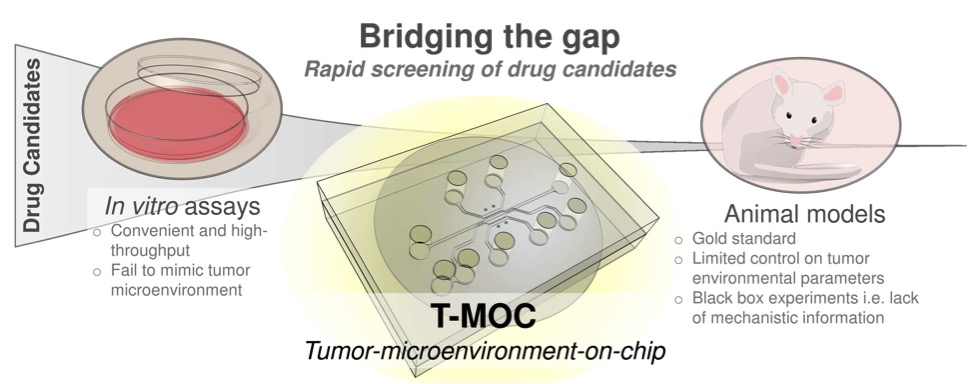A review paper by Altug, Hye-ran and Michael regarding microfluidic platforms to screen anti-cancer drugs and nano therapeutics is published in WIREs Nanomedicine and Nanobiotechnology.
In vitro microfluidic models of tumor microenvironment to screen transport of drugs and nanoparticles
Altug Ozcelikkale, Hye-ran Moon, Michael Linnes and Bumsoo Han
ABSTRACT
Advances in nanotechnology have enabled numerous types of nanoparticles (NPs) to improve drug delivery to tumors. While many NP systems have been proposed, their clinical translation has been less than anticipated primarily due to failure of current preclinical evaluation techniques to adequately model the complex interactions between the NP and physiological barriers of tumor microenvironment. This review focuses on microfluidic tumor models for char- acterization of delivery efficacy and toxicity of cancer nanomedicine. Microflui- dics offer significant advantages over traditional macroscale cell cultures by enabling recapitulation of tumor microenvironment through precise control of physiological cues such as hydrostatic pressure, shear stress, oxygen, and nutrient gradients. Microfluidic systems have recently started to be adapted for screening of drugs and NPs under physiologically relevant settings. So far the two primary application areas of microfluidics in this area have been high- throughput screening using traditional culture settings such as single cells or multicellular tumor spheroids, and mimicry of tumor microenvironment for study of cancer-related cell–cell and cell–matrix interactions. These microflui- dic technologies are also useful in modeling specific steps in NP delivery to tumor and characterize NP transport properties and outcomes by systematic variation of physiological conditions. Ultimately, it will be possible to design drug-screening platforms uniquely tailored for individual patient physiology using microfluidics. These in vitro models can contribute to development of precision medicine by enabling rapid and patient-specific evaluation of cancer nanomedicine.


